Last week we wrote about Google's new TV platform Android TV, arguing that the platform – which has just launched via Asus' Nexus Player – fails to make the case for mobile games on the big screen.
So, given Apple TV is yet to feature games of any kind and Amazon's Fire TV is struggling in similar fashion, we asked our Mavens:
Do games for mobile platforms have any real future on television, or have they already 'won' the living room thanks to smartphones and tablets?
I think developers and publishers are making a mistake if they view platforms like Android TV, Amazon Fire TV and probably the next Apple TV as just another platform for their mobile game titles.
As a user of the Fire TV, I find that most of the games are not well suited to the "sit back and play via a remote or game controller big screen experience.
Games created for a multi-touch device held in your hand simply don't port well to the big-screen format. I also wonder just how many users will even opt for a game controller, I suspect most will not.
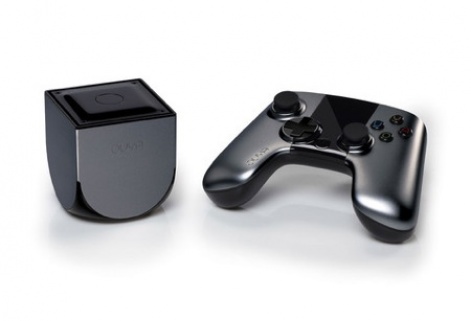
Now that's not to say that some games will run very well on these systems. Single press games like Flappy Bird or Canabalt run nicely, to cite two examples. Some have postulated that these platforms can act as "casual console game systems", using the controller and the available horsepower to run prior generation console games.
That was the pitch for Ouya, and if that is an indicator, the market isn't there.
I think developers and publishers are making a mistake if they view platforms like Android TV... as just another platform for their mobile game titles.William D. Volk
Console players would rather have a current console device than one with power of a decade old device. Of course, Apple and Amazon could trump that by matching current console specs. At that point they become competitors to Sony and Microsoft. It could happen, but that doesn't seem to be the strategy here.
So why are people buying Fire TV or Android TV boxes in the first place? In my case I wanted a Netflix, Pandora, YouTube, and Amazon Prime box. It's met that goal, although I think Amazon is being incredibly short sided in not having the decent voice search enabled in all the apps (not just Amazon).
And yes, I might play some games.
However I believe there is a real market for applications that run with broadcast events. I can see Paddy Power or Betfair running a sports betting app that has the live event running in the interface. Yes, they already do this with mobile and tablet apps, but I can see how running this on one of the TV platforms would make for a superior experience.
For non-betting apps the obvious application would be to tie social feeds and games to live events. There are also party games, where a few people interact on the same screen. Once again, this hasn't shown success yet, but maybe the killer game in this category will appear.
As for now, as long as mobile developers and publishers appreciate the form factor and UI constraints, it can be a decent secondary market for titles, which companies like HandyGames and others seem to be having some success with.
The television is the most communal device in a house, office, or bar. It requires a consensus of what its function is at that moment in time. Using it for one way media, such as watching a show/movie, frees up everyone's attention for a one on one moment with their portables with their own privacy and agendas.
I think that the driving behaviour for bringing games to these boxes requires a gimmick which might become the expected behaviour eventually. That gimmick is multiplayer between the phones and tablets as the input devices and the TV as the hub/host of the endpoint of the action from the phones. Turn-based gameplay makes the most sense because each player can multitask on their phones.
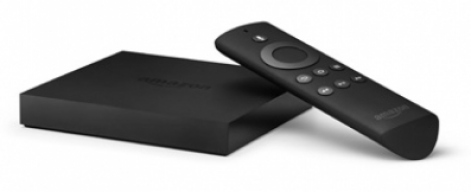
Two weeks ago I was introduced to an app called Cardcast. It uses a Chromecast to host a game similar to the wildly popular Cards Against Humanity.
Five of us had so much fun playing it for hours. The only thing it was missing was an option to let the winner of the round control the music being played. It really opened my eyes to a new opportunity for the TV platforms.

I think it's quite difficult to accept that the TV isn't (going to be) the primary screen for everyone in the household. Even for someone like myself, having grown up with the TV as a primary device for information and entertainment, it's hard to adjust to the fact that it's becoming less and less relevant in it's original form - but it's where we're going, fast.
I believe we're just about to see the biggest change ever for TV's around the world. These are being transformed into on-demand entertainment boxes, with all the benefits the TV screen still has – social and immersive experiences. The live streaming bandwidth is there (and coming, everywhere it's not already), and the content is also there (Netflix, iTunes to name a few). We're not looking at evolution like flatscreen or 3D TVs, we're looking at a full scale content revolution that will change user behavior and content consumption on a major scale.
Microsoft tried to position Xbox One as a mass market device, but gamers aren't looking for mainstream features.Thomas Nielsen
We've seen it before. The iPhone came out as a nice, but fairly restricted phone on its own. The one big differentiator was the possibility for consumers and content providers to connect. The apps (and in particular, the games) market literally exploded, as content providers learned to provide consumers with the content they wanted.
Platform holders are already at war. Ouya has failed to make an impact until now because its device is targeted towards gamers, a niche much too small. Microsoft understood, and tried to position Xbox One as a mass market device, but neglected that Xbox is already a gamers brand, and that gamers aren't looking for mainstream features.
Google and Amazon's efforts are to me the most interesting players at the moment; both offer low-cost products that turn TVs into interactive entertainment boxes, and these products (or their next iterations) have the potential of becoming massive hits, because they allow for consumers and content providers to connect on a mainstream level. Apple will making that same move too, I'm sure.
Whether or not games for mobile platforms will have any success on TVs, I think the question is more "will games have any success on TVs". If you're a developer looking to enter this market, you already see yourself as a game developer rather than a mobile game developer. Sure, lots of touch based game concepts won't work. Plenty of others will. When touchscreen mobiles started appearing, lots of people argued console games would never work on mobile. And they don't, but plenty of games built on similar qualities work perfectly well.
Consumers will want their TVs to be interactive, soon. Game developers will want to explore how to best serve this audience, and they will eventually get it right. I have no doubts that this will become a major market for many of us.
I think for games to be successful (both as a compelling user experience and commercially) then there needs to be a good fit with: the mode of use; a particular audience niche/demographic; the environment in which they are played; and, the devices on which they are provided.
To me, the raft of micro-platforms feel like they are propelled by none of that. Instead, the primary reason appears to be; "do it because the OS is the same" and, I suspect, because "we're desperate to generate platform revenue/take it from other platforms".
I think people who are in positions to make these strategic market decisions are, perhaps, subconsciously affected by warm and cherished memories of days, long past, playing with their SNES or Megadrive with childhood friends and think that can be replicated with today's hardware.
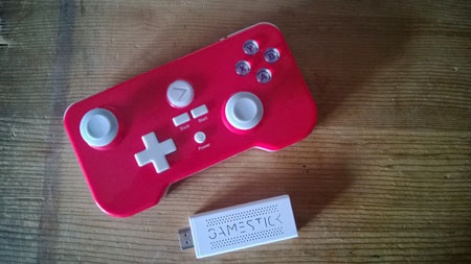
I backed GameStick on day one of its Kickstarter. I genuinely looked forward to its arrival, but when it arrived I couldn't get it to connect to my rubbish home Wi-Fi and gave up after an hour or so. Since then it has remained in a dusty box on a shelf (above all of the similarly no longer played Wii games).
I personally feel no strong lure to play mass-casual games designed for mobile on the big screen. I think we'd know by now if there was a meaningful market demand for this format because consumers would be screaming insults at us all on forums and social media about the lack of products. Consumers are exceedingly vocal these days. Are they shouting loudly for cheap digital games made for their TV?
Shall I plug in an ever-so-slightly cheap and tacky Android box thing and play a game I've already played to death on my iPad?Kevin Corti
Personally, I think that the family living room is too busy a place for dedicated game time (at a mass-gaming scale). That's why console games are circa 10 percent of the overall games industry now it is truly a mass entertainment affair. The most oft-played game on our TV is the modern-day classic of "Keep the Sky HD box hard drive less than 99 percent full".
Granted, many homes have more than one big TV, but then that's where the 'proper' console is likely to reside.
Right…..so, do I want to fire up The Last of Us on my PS4 with its expensively-crafted controllers and device UI, or….shall I plug in an ever-so-slightly cheap and tacky Android box thing and play a game I've already played to death on my iPad whilst comfortably propped up on the sofa, sipping a cup of tea and watching Leicester City FC lose again on Match of the Day?
I think the answer is clear.

Oscar Clark has been a pioneer in online, mobile, and console social games services since 1998. He is also author of the book, Games As A Service – How Free To Play Design Can Make Better Games.
TV isn't the primary screen anymore for most people. It hasn't been for a while. The primary go-to screen is already our phone, which, according to a survey I recently read, more people reach for first in the morning than anything else - apparently including their glasses.
That doesn't mean the TV is going away…its role is just changing and we are in that difficult transition phase. There is a convenience in having a bigger screen to view when I'm in a comfortable position, but the super-sized screens dominate our rooms. Just as cinema hasn't disappeared but it has adapted to become a shared 'event' experience; I think TV will become the shared 'family' screen.
However, TV has a lot of vested interested vying for your attention. Traditional broadcast TV channels with their Live services. Cable (and satellite) companies who collate different premium services, often including your broadband. Then there are the internet-based services like Netflix and Amazon Prime. Games aren't usually the dominant reason for buying a TV, although they definitely inform that decision for hard core gamers.
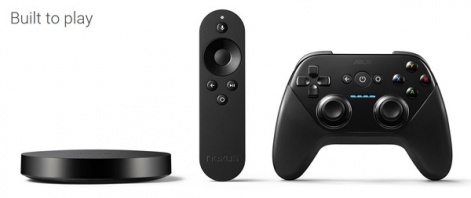
Personally, I use my PS4 mostly for watching Netflix although I do play games a lot too but mostly when the rest of the family has gone to bed and I have the living room to myself. But most people won't have all the consoles and even then are these the best ways to connect your TV to the power of the internet?
We can all see the potential for a connected TV has to be more interesting that what's currently available, but none of the current choices have yet really hit it off. Smart TVs seems too clumsy, set-top boxes are controlled by the cable companies, Ouya and Gamestick didn't really offer enough games which would hold our attention on a TV. Apple TV, Amazon Fire and Android TV all want us to sign up to their premium services and the Steam Box is unlikely to be better adopted than a media PC or current gen console.
I think the reason is that these are all technologies looking for a solution to solve.
We need to work out a convincing user experience that explains why we must have these devices in our living rooms. For me I think the closest one to finding a convincing answer has been the Chromecast.
We need to work out a convincing user experience that explains why we must have these devices in our living rooms.Oscar Clark
Ok. I know. Really? Chromecast? Not the actual service experience, but the underlying approach.
The Chromecast was a cheap HDMI dongle which you can plug into any TV and which uses your WiFi to connect your phone or table with the dongle. You then get to stream experiences using your own device and its already existing accounts to access content you already have the rights to access. Then the dongle delivers the content for you and displays it on the TV (without draining the power on your phone). You can also easily switch between devices so different people can drive the shared screen easily (at least that's what should happen).
Of course the actual Chromecast wouldn't let you play games, didn't support your device as a controller, didn't even support side-loaded content (I assume because of an over protective legal team), etc.
I don't think any of these devices will succeed until they connect our mobile and online accounts and bring our content experiences to the shared 'family' screen. Then watch out as the power of the internet will deliver new hybrid experiences we have yet to imagine not just for games.
As William mentioned already - it's a nice niche market for us or as he called it a second market.
For us Android TV, Amazon TV, OUYA, and all the other "unconsoles" are part of our "beyond mobile" strategy. Games cannot be ported 1:1 to the consoles – if you do you will fail! You need to put a lot of effort bringing your games over to ANY other platform. You have other business models, UI, distribution channels, promotion possibilities etc.
We just launched five different titles on the new Nexus Player on Android. I personally use also an Amazon Fire TV at home and not all games are really optimised for the big screen. I am sure we will see a new big wave of great games for those platforms in the next couple of months. Perhaps also some exclusive content but those will be financed by the OEMs.

I think two points here stand out by a country mile.
Firstly, William is right that single press games like Canabalt and Flappy Bird would work perfectly on the TV, but as he hints, why would you want to dedicate your whole TV to a game like that – blocking out all other content as a result – when you could already play such a game on your phone or tablet while watching the TV?
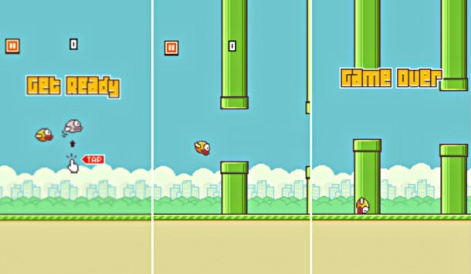
The notion that some mobile games will physically work on TVs isn't lost on me, but I think many developers don't understand that isn't in itself a selling point.
Secondly, and linked to William's point, Kevin sums up the situation brilliantly: if you're going to dedicate your TV to a videogame, it has to be one that can demand and hold your entire attention, and that of anyone else in the room. Beyond the odd party situation, no-one in your household is going to be too happy if they miss their favourite soap because you've got the TV hooked up to a game of Flappy Bird.
Apple realises this, and this is why there's still no games on Apple TV. It's also why no-one users internet browsers or Twitter clients on their TV sets; why would you when it's quicker and easier to use the phone you already have, and you can watch TV while you do it?
Google, Amazon and the like have to recognise there is no middle ground in the TV market. You either take on Xbox, PlayStation and Wii with full-scale experiences, or you retreat and leave mobile games where they belong: in the palm of your hand.

























